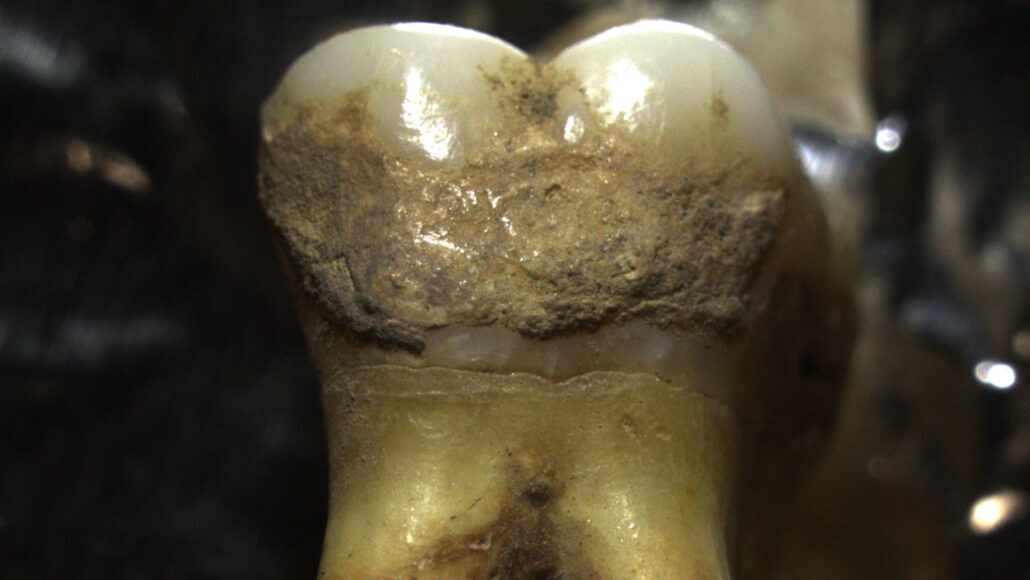
Hunter-gatherers living in this part of Europe avidly gathered and ate wild cereal grains for several millennia before migrants from southwest Asia introduced the cultivation of domesticated cereals and other plants, say archaeologist Emanuela Cristiani of Sapienza University of Rome and her colleagues. A well-established taste for wild cereals among hunter-gatherers of the central Balkan Peninsula, near what's now Turkey, smoothed the way for farming to take root in Europe, the scientists conclude January 21 in eLife.
Previous chemical studies of human bones from Balkan sites indicated that ancient hunter-gatherers had eaten a lot of animal protein, mainly fish. Plant remains have not preserved well at those sites, leaving uncertain any role for grains on the menu of people who lived there.
It's now evident that Balkan hunter-gatherers "balanced their diet with plant foods and did so for millennia before the arrival of agriculture," Cristiani says.
Comment: 'Balanced' is a questionable term to use, because adding grains to ones diet does not necessarily mean that they are in equal amounts, nor that they needed to provide some kind of 'balance'. As noted, they mainly ate fish and other animal protein. Calling it balanced is likely due to the current belief that humans need plants and grains in their diet. Whilst that may be the case now, in small amounts, it doesn't mean it has always been the case: Arctic island mammoth shows strongest evidence yet of human slaughter and butchering
The new findings align with earlier evidence that hunter-gatherers in southwest Asia gradually domesticated wild plant species from around 11,700 to 9,800 years ago, rather than rapidly adopting a farming lifestyle (SN: 7/4/13). But in the Balkans, hunter-gatherers consumed wild cereal species unrelated to domesticated strains later brought from southwest Asia, Cristiani's team says.
Comment: And the adoption may have been a necessity at the time, due to the cataclysmic events the planet had suffered: The Seven Destructive Earth Passes of Comet Venus
Until now, the only site outside southwest Asia to yield evidence of hunter-gatherers collecting edible wild plants before the introduction of farming was a cave in Greece.
Cristiani's group looked for microscopic signs of plant eating on the teeth of 60 individuals previously excavated at five sites in Serbia and Romania. Those sites range in age from several thousand years before the introduction of farming to several hundred years after cultivation began.
Food particles extracted from crusty deposits on the teeth of ancient hunter-gatherers contained starch granules and cell structures typical of regional wild cereal species. Starch granules from the same wild cereals were identified on the grinding surfaces of 17 stone implements, dating to as early as around 8,600 years ago, that were previously unearthed at one Balkan site. Hunter-gatherers at that location apparently pounded and ground wild cereals into a coarse flour, the researchers say.
Their findings provide the first direct evidence that southern European as well as southwestern Asian hunter-gatherers incorporated wild plants into their diets well before anyone cultivated crops, says archaeobotanist Elena Marinova of the State Office for Cultural Heritage Baden-Württemberg in Germany. For those ancient people, "the 'paleolithic' diet included starchy grains, not only meat and berries," Marinova says.
E. Cristiani et al. Wild cereal grain consumption among Early Holocene foragers of the Balkans predates the arrival of agriculture. eLife. Published January 21, 2022. doi: 10.7554/eLife.72976.sa0.



How advanced mankind has become 🤣 🤣 🤣 🤣 🤣 🤣